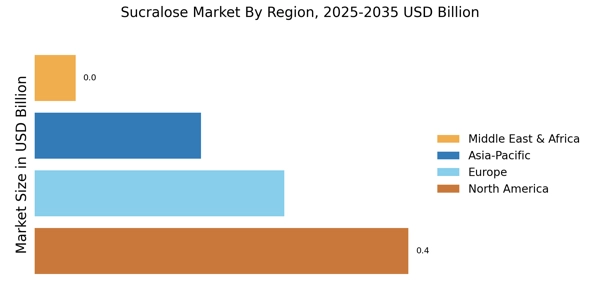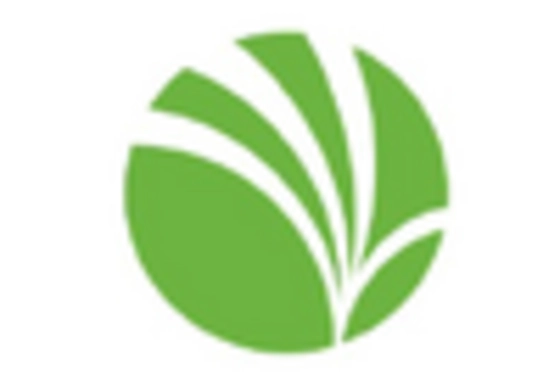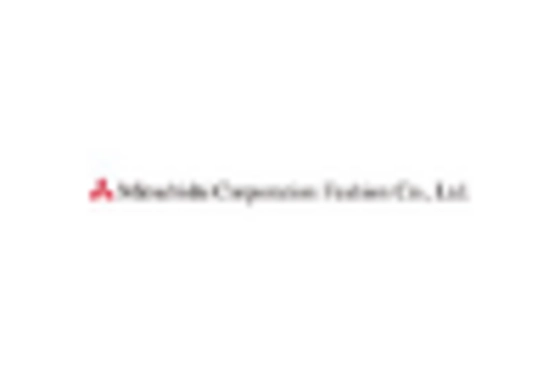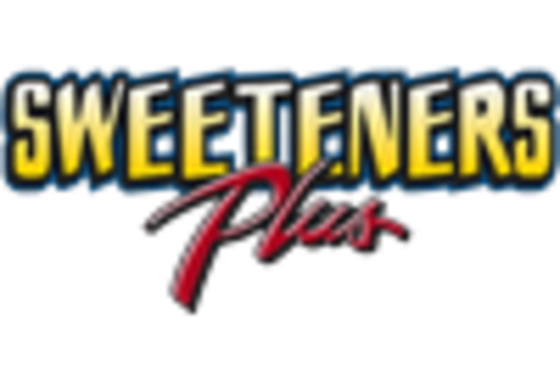Rising Demand for Low-Calorie Sweeteners
The increasing prevalence of obesity and related health issues has led to a rising demand for low-calorie sweeteners, including sucralose. As consumers become more health-conscious, they are actively seeking alternatives to sugar that do not compromise on taste. The sucralose market is experiencing growth as food and beverage manufacturers incorporate this sweetener into their products to cater to this demand. According to recent estimates, the low-calorie sweetener market is projected to reach a value of approximately USD 2.5 billion by 2026, with sucralose being a key contributor. This trend indicates a shift in consumer preferences towards healthier options, thereby driving the sucralose market forward.
Growing Popularity of Sugar-Free Products
The increasing popularity of sugar-free products is a significant driver for the sucralose market. As consumers become more aware of the health risks associated with excessive sugar consumption, there is a marked shift towards sugar-free alternatives. This trend is particularly evident in the confectionery and dairy sectors, where sucralose is often used to create appealing sugar-free options. Market analysis indicates that the sugar-free product segment is expected to grow at a compound annual growth rate (CAGR) of over 6% in the coming years, further solidifying the role of sucralose in meeting consumer demands. The sucralose market is thus positioned to capitalize on this growing trend.
Expansion in Food and Beverage Applications
The versatility of sucralose has led to its widespread adoption across various food and beverage applications. From soft drinks to baked goods, sucralose is increasingly utilized as a sugar substitute due to its ability to provide sweetness without calories. The sucralose market is benefiting from this expansion, as manufacturers explore innovative formulations that incorporate sucralose to enhance product appeal. Recent data suggests that the beverage segment alone accounts for over 40% of the total sucralose consumption, highlighting its significance in this sector. As the demand for healthier food options continues to rise, the sucralose market is likely to see further growth in diverse applications.
Regulatory Support for Low-Calorie Sweeteners
Regulatory bodies around the world are increasingly supporting the use of low-calorie sweeteners, including sucralose, as part of public health initiatives aimed at reducing sugar intake. This regulatory support is crucial for the sucralose market, as it legitimizes the use of these sweeteners in various products. For instance, the approval of sucralose by the Food and Drug Administration (FDA) and other health organizations has paved the way for its incorporation into a wide range of food items. This endorsement not only boosts consumer confidence but also encourages manufacturers to innovate and expand their product lines, thereby propelling the sucralose market forward.
Innovations in Sucralose Production Techniques
Advancements in production techniques for sucralose are contributing to the growth of the sucralose market. Innovations such as enzymatic processes and fermentation methods are enhancing the efficiency and sustainability of sucralose production. These developments not only reduce production costs but also improve the overall quality of the sweetener. As manufacturers adopt these innovative techniques, the availability of high-quality sucralose is expected to increase, meeting the rising demand from various sectors. Furthermore, these advancements may lead to a reduction in the environmental impact of sucralose production, aligning with the growing emphasis on sustainability within the food industry. This evolution in production methods is likely to bolster the sucralose market in the years to come.


















Leave a Comment